This morning we welcomed to Blythe House a visitor from the Emerald Isle, looking at a selection of 16th and 17th century objects; two caps, a doublet, embroidered sleeve and the famous Margaret Layton jacket, hoping to learn something about their construction.
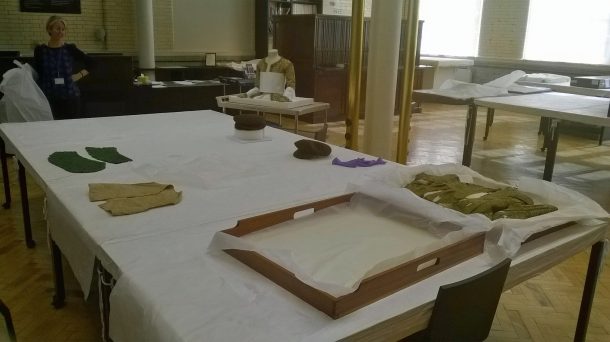
Let’s take a closer look at that doublet, which is laying in the wooden tray in the first photo. It was acquired by the V&A in 1869 and has been in store since at least 1992 (that’s how far our electronic location records go back), firstly in 110 Store (now the Lunchroom) and now here at Clothworkers’. From the look of the black and white image on Search the Collections it appears that it may have been displayed in the 1950s – the mannequin is of good quality and supports the object quite adequately, producing a convincing silhouette. The doublet is very beautiful, the green and cream silk still shines despite its age, and we get an even better idea of what it would have looked like circa 1625 when we have a peek at the inside. Where the inner-lining has gone, we can see slim section of the silk tucked around, underneath an old piece of net applied to help hold the silk together by a conservator of old. Much of the front is also covered in a more modern, more transparent net which helps to hold all the shattered pieces of silk down, retaining the pattern and shape of the object. Also, note the lace-holes at the bottom of the picture which would have fastened the doublet to the breeches.

The poor condition of the silk means that this object may never again be displayed, but that does not mean an end to its useful life. We can still learn a very great deal about the object and how it was made, which makes it an invaluable resource for students, theatre designers and re-enactors hoping to understand or recreate how these things were made. Holes, then, can be a sort of blessing when they allow us to see how an object of this type was made, and the layers of its construction (in this case a fancy woven silk, on top of a coarse linen).
Only two of the doublet’s buttons now survive on the front, one at the collar and another on the chest. The collar-button (right) has lost all of the silk thread which once covered it, leaving only the wooden knob which would have formed it. The buttons and silk braid on the sleeves is stunning, and can be seen in greater, greener detail on Search the Collections.
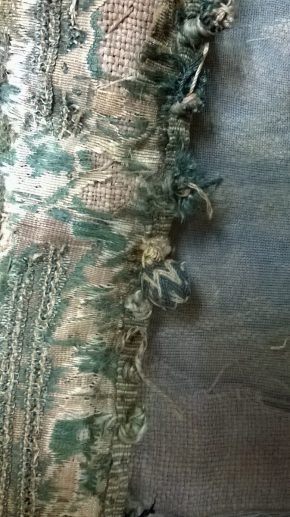

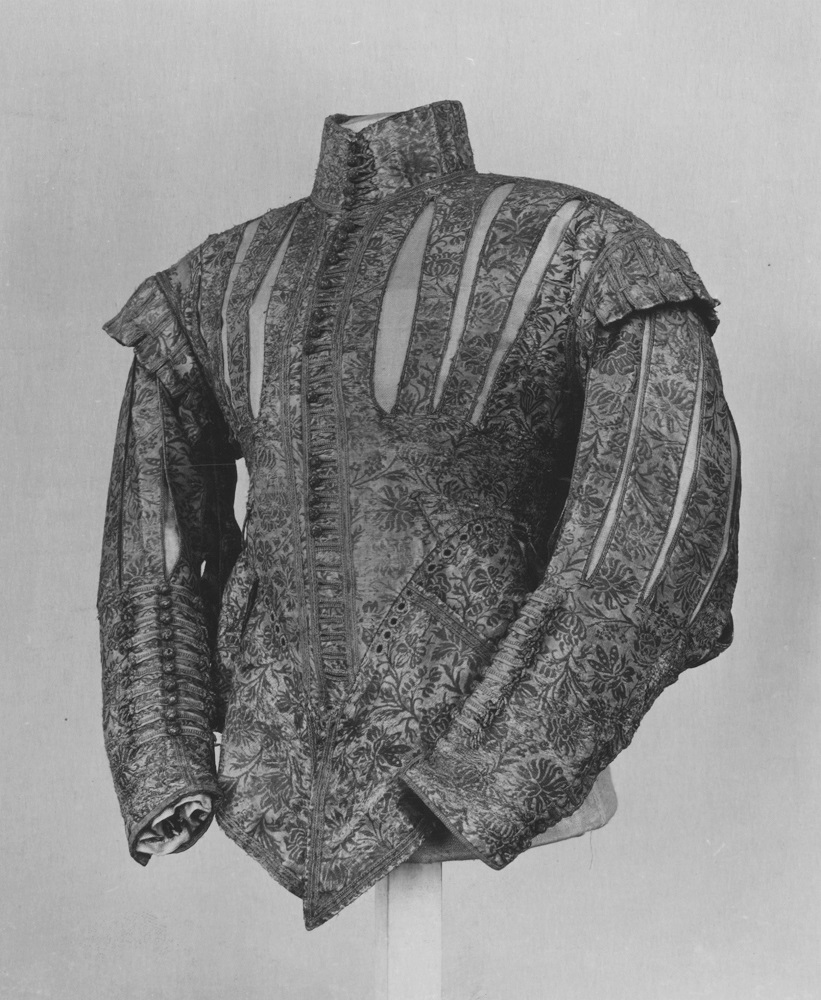
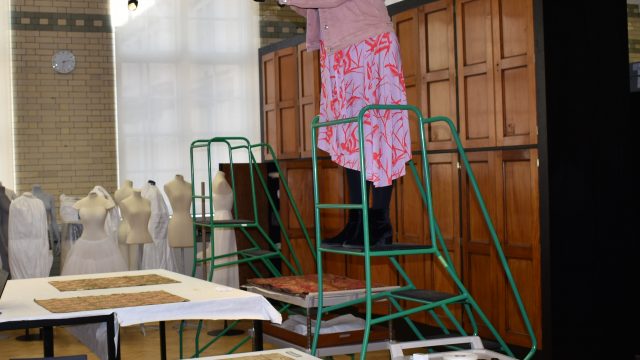
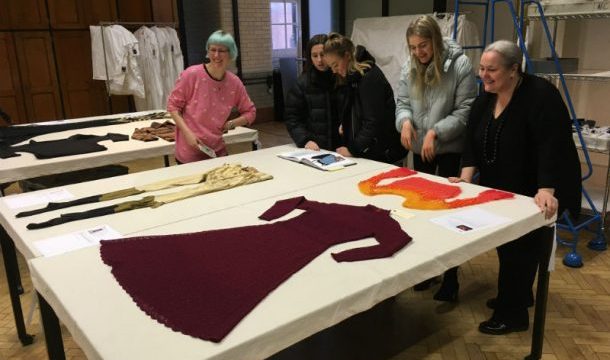
For some reason I can’t see any photos?